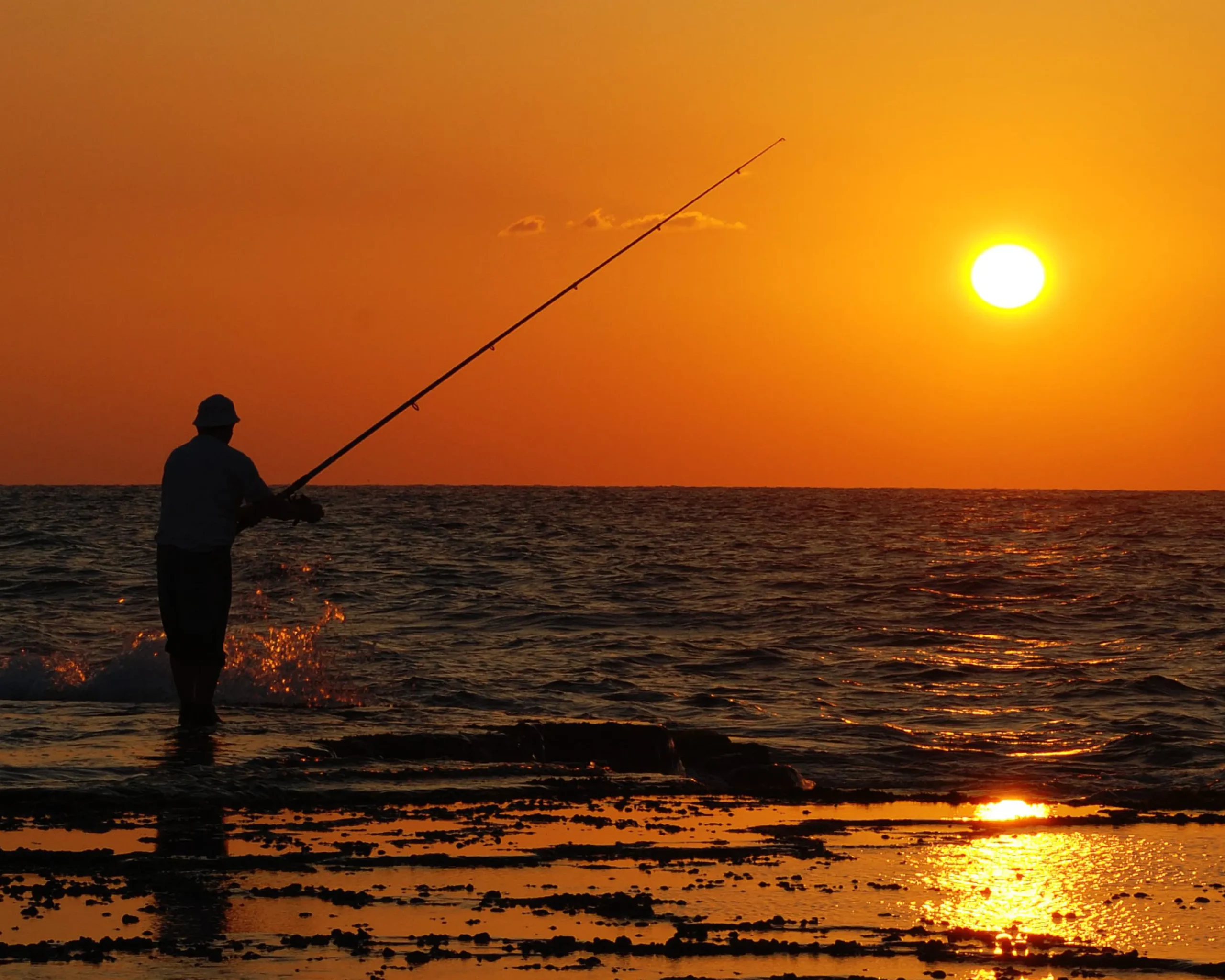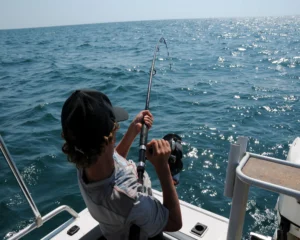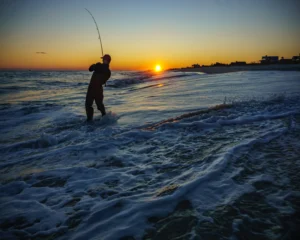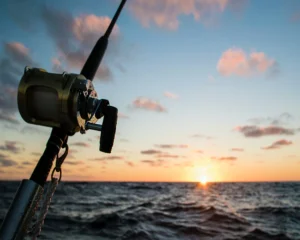Read in Urdu Language Click Here.
Bank Fishing:
Bank fishing, also known as shore fishing, is a type of fishing where anglers cast their lines from the shore, riverbank, lake shore, or other accessible areas without the use of a boat. Bank fishing is a popular and accessible way to enjoy fishing, and it can be done in freshwater or saltwater environments.
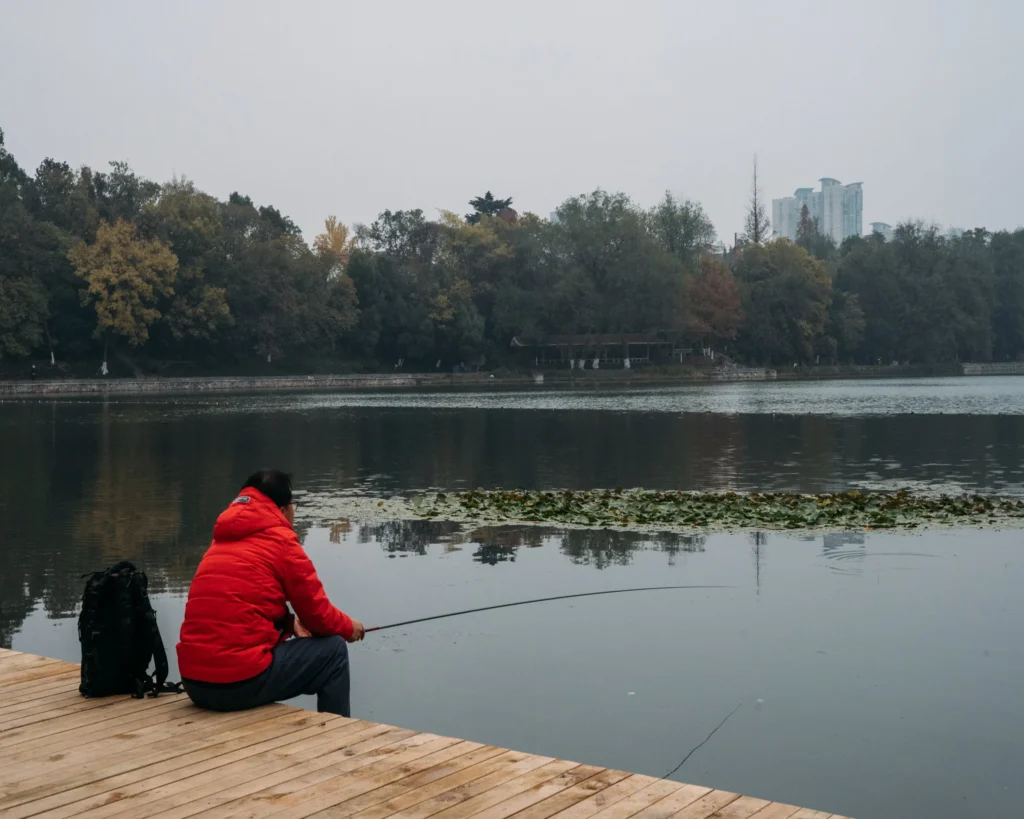
Here are key aspects of bank fishing:
-
Equipment:
Fishing Rod and Reel:
Anglers typically use a variety of fishing rods and reels based on their target species and fishing style. The choice may include spinning rods, bait casting rods, or fly rods.
Fishing Line:
Fishing lines are different, such as, monofilament, fluorocarbon, and braided lines. The choice of line depends on the fishing conditions and target species.
Terminal Tackle:
This includes hooks, sinkers, swivels, and leaders. The specific terminal tackle depends on the type of bait or lure being used and the target species.
Bait and Lures:
Anglers can use a variety of baits, including live bait (worms, minnows, and crickets), cut bait, or artificial lures, depending on the type of fish they are targeting.
Tackle Box:
A tackle box holds an angler’s fishing accessories, such as extra hooks, sinkers, lures, and tools.
-
Fishing Techniques:
Casting:
Casting is a fundamental skill in bank fishing. Anglers cast their lines into the water to reach areas where fish may be located.
Still Fishing:
Still fishing involves casting the line and allowing the bait to sit relatively motionless in the water. This can be effective for species that are not very active.
Bottom Fishing:
Anglers let their bait sink to the bottom and wait for fish to pick it up. Bottom fishing is often used for species like catfish and carp.
Float Fishing:
Using a float or bobber allows anglers to suspend their bait at a specific depth. This method is effective for panfish and other species that feed at different water levels.
Bank Feeding:
This technique involves introducing bait into the water near the shore to attract fish to the area before casting your line.
-
Location and Strategy:
Choosing a Fishing Spot:
Successful bank fishing often involves selecting a good fishing spot. Areas with structure, such as rocks, fallen trees, or vegetation, are likely to attract fish.
Understanding the Water:
Knowledge of the water body, including its depth, currents, and features, can help anglers determine where fish are likely to be located.
Weather and Seasonal Considerations:
Weather conditions, including temperature, wind, and cloud cover, can impact fish behavior. Seasonal patterns also influence the activity of different species.
Time of Day:
Sunrise and sunset are often considered prime times for fishing.
Regulations and Permits:
Anglers should be aware of and adhere to local fishing regulations, including catch limits, size restrictions, and the need for fishing permits.
-
Advantages of Bank Fishing:
Accessibility:
Bank fishing is accessible to a wide range of anglers, as it does not require a boat. Many fishing locations, such as ponds, lakeshores, and riverbanks, are easily reachable from the shore.
Cost-Effective:
Bank fishing is generally more cost-effective than owning and maintaining a boat. Anglers can get started with basic equipment.
Social Experience:
Bank fishing can be a social activity, allowing anglers to enjoy the outdoors with friends or family.
Enjoying Nature:
Bank fishing provides an opportunity to appreciate and connect with nature while waiting for a bite.
Bank fishing is a versatile and enjoyable way to engage in the sport. Whether fishing from the shore of a lake, riverbank, or coastal area, anglers can use various techniques and strategies to pursue a diverse range of freshwater and saltwater species.
Read in Urdu Language Click Here.

